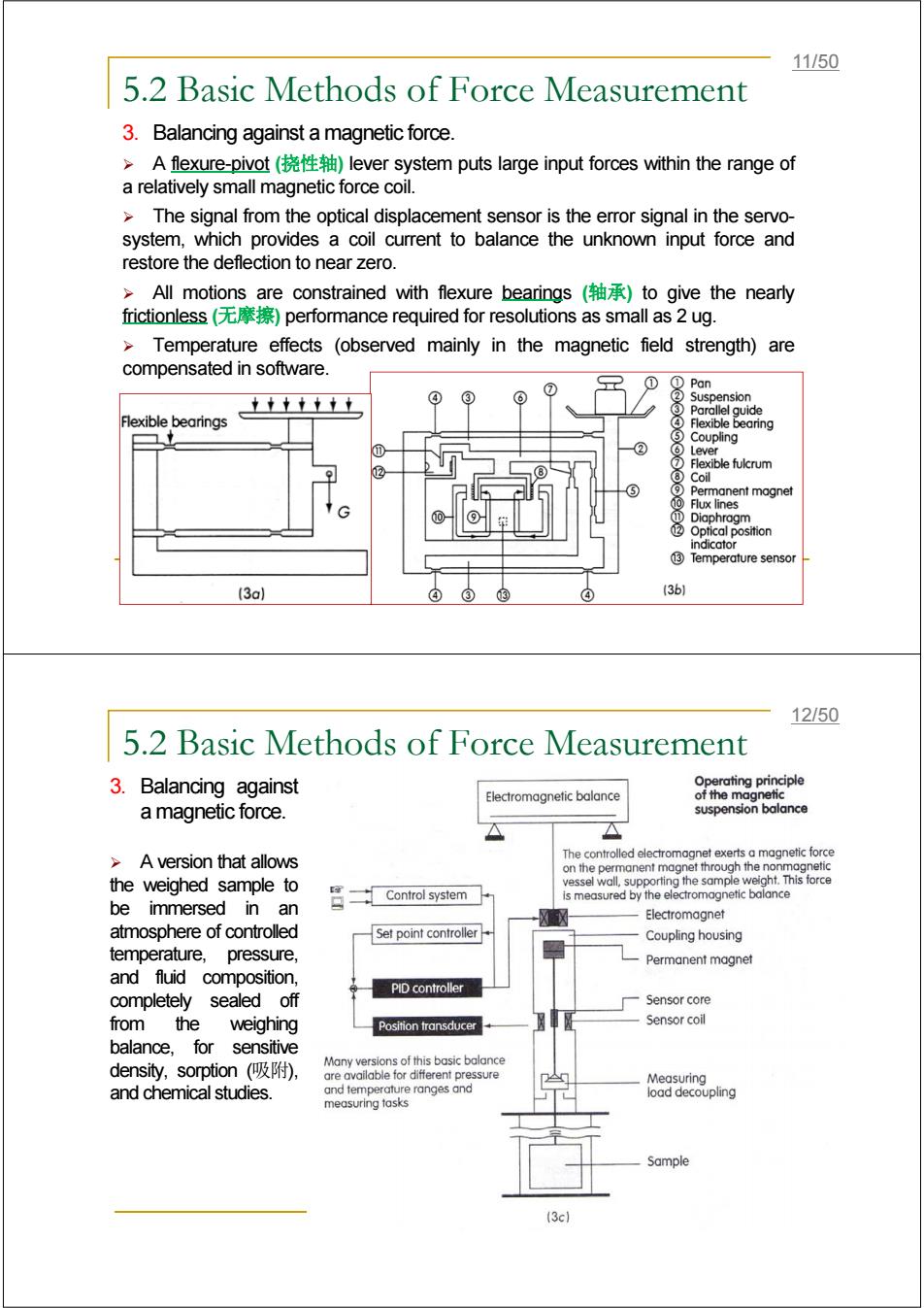正在加载图片...

11/50 5.2 Basic Methods of Force Measurement 3.Balancing against a magnetic force. >A flexure-pivot (lever system puts large input forces within the range of a relatively small magnetic force coil. The signal from the optical displacement sensor is the error signal in the servo- system,which provides a coil current to balance the unknown input force and restore the deflection to near zero. All motions are constrained with flexure bearings (to give the nearly frictionless (performance required for resolutions as small as 2 ug. Temperature effects (observed mainly in the magnetic field strength)are compensated in software. ③ ⑦ Pan ttttttt ② Suspension ③Parallel guide Flexible bearings Flexible bearing ⑤Coupling ① 3 Lever 7 Flexible fulcrum 8 Coil ⑤ ⑨Permanent magnet G Flux lines 包 Diaphragm ②Optical position indicator ③Temperature sensor (3a) (3b 12/50 5.2 Basic Methods of Force Measurement 3.Balancing against Operating principle Electromagnetic balance of the magnetic a magnetic force. suspension balance >A version that allows The controlled electromagnet exerts a magnetic force on the permanent magnet through the nonmagnetic the weighed sample to vessel wall,supporting the sample weight.This force Control system is measured by the electromagnetic balance be immersed in an Electromagnet atmosphere of controlled Set point controller Coupling housing temperature,pressure, Permanent magnet and fluid composition, PID controller completely sealed off Sensor core from the weighing Position transducer Sensor coil balance,for sensitive density,sorption(吸附), Many versions of this basic balance are available for different pressure Measuring and chemical studies and temperature ranges and load decoupling measuring tasks Sample (3c5.2 Basic Methods of Force Measurement 3. Balancing against a magnetic force. ¾ A flexure-pivot (挠性轴) lever system puts large input forces within the range of a relatively small magnetic force coil. ¾ The signal from the optical displacement sensor is the error signal in the servosystem, which provides a coil current to balance the unknown input force and restore the deflection to near zero. ¾ All motions are constrained with flexure bearings (轴承) to give the nearly frictionless (无摩擦) performance required for resolutions as small as 2 ug. ¾ Temperature effects (observed mainly in the magnetic field strength) are compensated in software. 11/50 5.2 Basic Methods of Force Measurement 3. Balancing against a magnetic force. ¾ A version that allows the weighed sample to be immersed in an atmosphere of controlled temperature, pressure, and fluid composition, completely sealed off from the weighing balance, for sensitive density, sorption (吸附), and chemical studies. 12/50